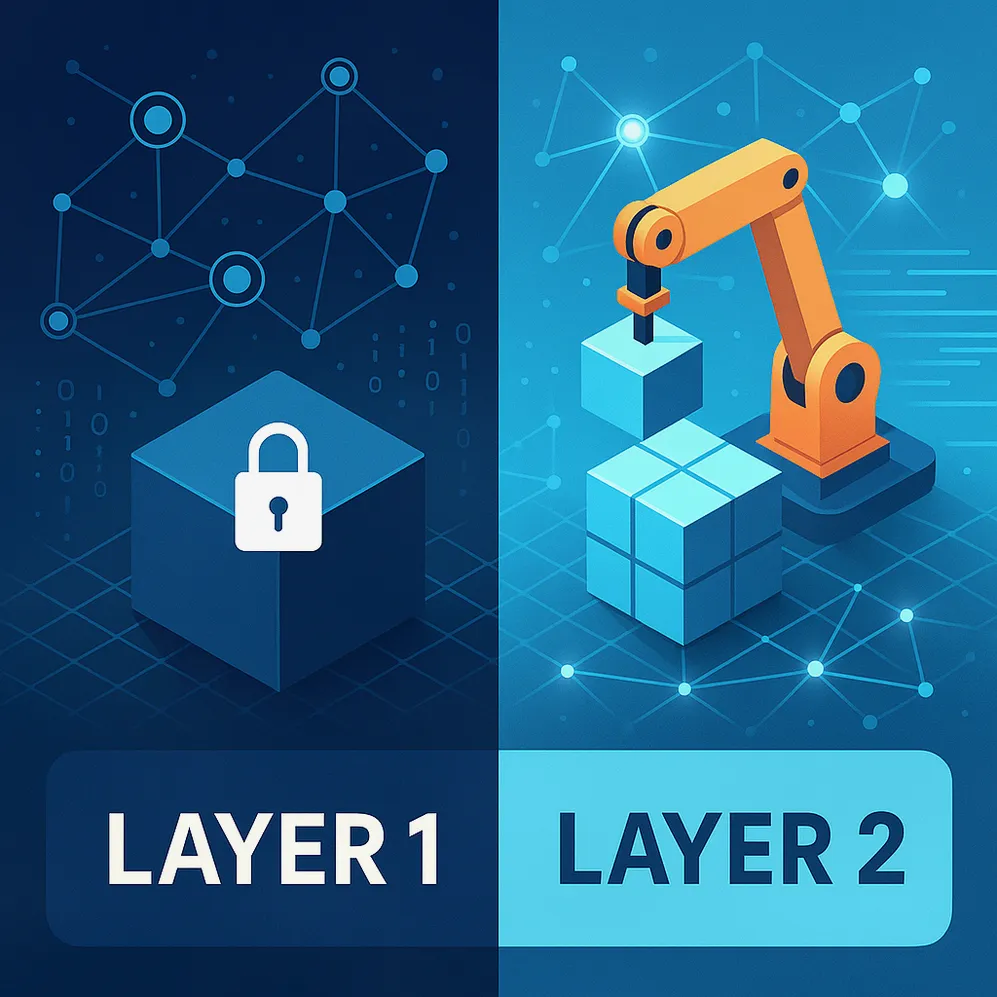Blockchain technology has taken the world by storm, revolutionizing industries from finance to supply chain. But as adoption soars, networks like Ethereum and Bitcoin face a serious dilemma: scalability. That’s where Layer 1 and Layer 2 blockchain solutions step in. If you want to understand Ethereum rollups, sidechains, and what lies beneath the surface, you’ve landed in the right place. Dive into this comprehensive comparison of Layer 1 vs Layer 2 Blockchain Solutions and see how each shapes the future of decentralized finance (DeFi) and beyond.
What is Layer 1 in Blockchain?
A Layer 1 blockchain refers to the base protocol of a blockchain network. Examples include Bitcoin, Ethereum, and Solana. These blockchains process and validate transactions directly on their own chain. All core features and consensus mechanisms, like Proof-of-Work (PoW) or Proof-of-Stake (PoS), occur at this foundational level.
Key Features of Layer 1 Blockchains
- Security comes from the decentralized nature of the base chain.
- Native currency (like ETH or BTC) for transaction fees.
- Mainnet operation, ensuring all applications inherit the same security and trust.
However, Layer 1 blockchains can become congested as user activity grows, resulting in higher fees and slower transactions.
What is Layer 2 in Blockchain?
Layer 2 solutions are built on top of existing Layer 1 blockchains. Their role is to improve scalability and efficiency by processing some activities off the main chain, then later reporting summaries or proofs back to Layer 1.
Key Types of Layer 2 Solutions
- Rollups (Optimistic and ZK), like Arbitrum and zkSync.
- State channels, such as Lightning Network for Bitcoin.
- Sidechains, separate blockchains linked to the main network (e.g., Polygon for Ethereum).
Layer 2s aim to ease congestion on the mainnet, offer cheaper transactions, and ensure faster processing—all while leveraging the security of their underlying Layer 1 chain.
Layer 1 vs Layer 2 Blockchain Solutions: Main Differences
| Feature | Layer 1 | Layer 2 |
|---|---|---|
| Core Function | Base protocol (e.g., Ethereum, Bitcoin) | Built on Layer 1, extends its capabilities |
| Scalability | Limited, can get congested as network grows | Designed to solve scalability bottlenecks |
| Security | Directly from network consensus | Inherits mainnet security (with variations) |
| Transaction Fees | Often higher, especially during high usage | Lower fees, as processing occurs off-chain |
| Examples | Ethereum, Solana, Bitcoin | Arbitrum, Polygon, Lightning Network |
Why Do We Need Layer 2?
Demand for DeFi, NFTs, and everyday blockchain applications has exposed the need for scalable solutions. High Ethereum gas fees and network slowdowns become deterrents for new users and developers.
Layer 2 blockchain solutions bridge the gap, making decentralized applications (dApps) affordable and accessible. For instance, you can mint NFTs or engage in fast DeFi trading without incurring the high costs of Layer 1.
Choosing Between Layer 1 and Layer 2: What’s Right For You?
- For Security and Decentralization: Directly interacting with Layer 1 is the gold standard. Valuable assets and mission-critical transactions often remain here.
- For Mass Adoption and Everyday Use: Layer 2 is the game changer! Payments, gaming, and fast DeFi swaps thrive on Layer 2’s lower fees and high throughput.
Binance: The Gateway to Blockchain Innovation
Want to experiment with both Layer 1 and Layer 2 solutions, and gain access to an ever-growing crypto ecosystem? It all starts with a reliable exchange platform. Sign up for Binance using the code CRYPTONEWER to enjoy special benefits for new users. Binance provides support for a wide range of blockchain assets and seamlessly integrates Layer 1 and leading Layer 2 tokens, empowering all your investment and DeFi activities.
Final Thoughts on Blockchain Scaling Solutions
Layer 1 vs Layer 2 Blockchain Solutions both have their place in the crypto revolution. Understanding their differences—and how they complement each other—can help you maximize efficiency, minimize fees, and confidently navigate the decentralized future.
Resources for Further Reading
Ready to start your blockchain journey? Don’t forget to claim your special Binance offer with the code CRYPTONEWER!


